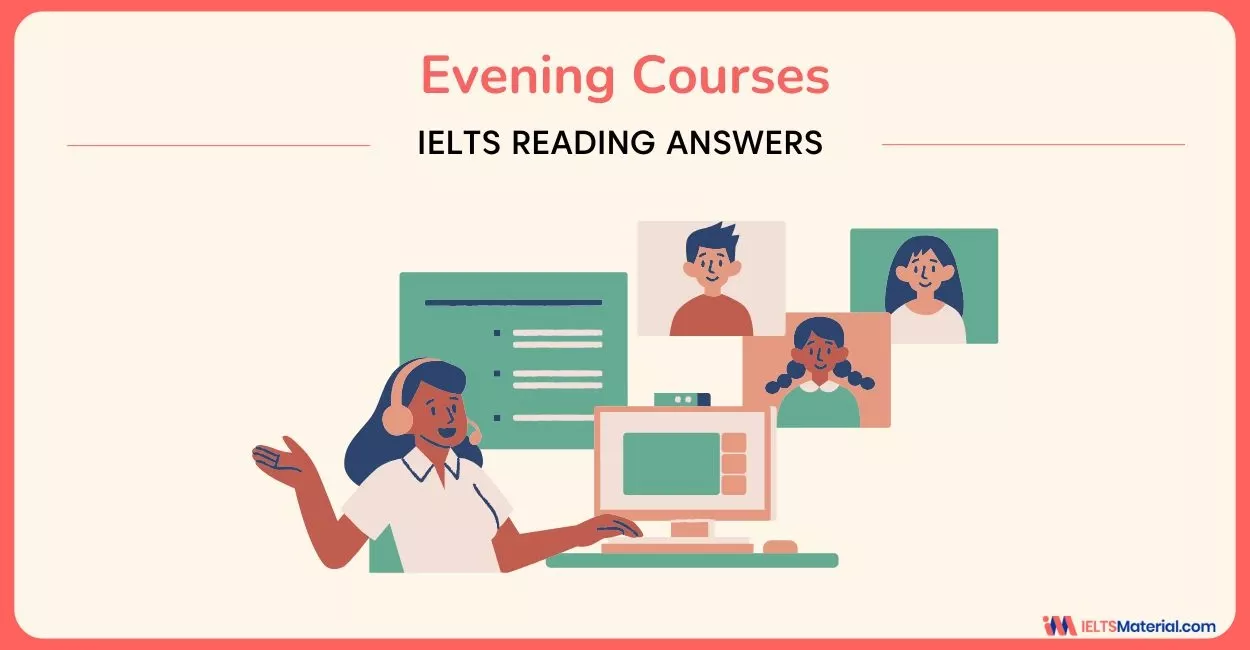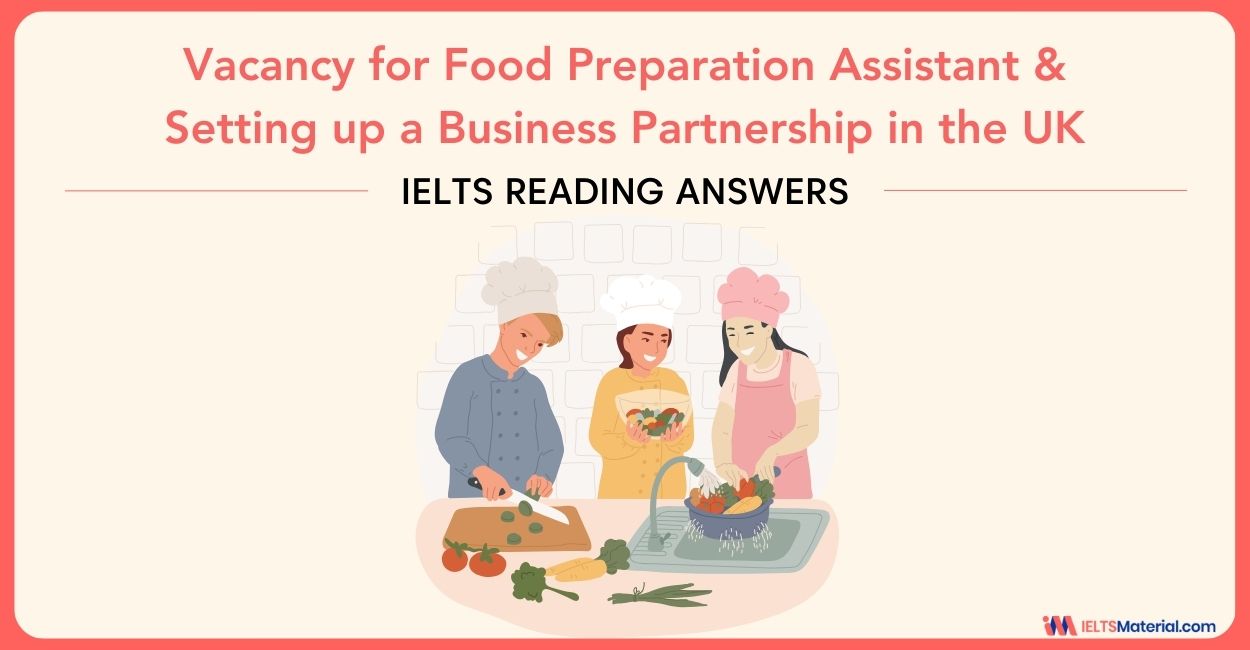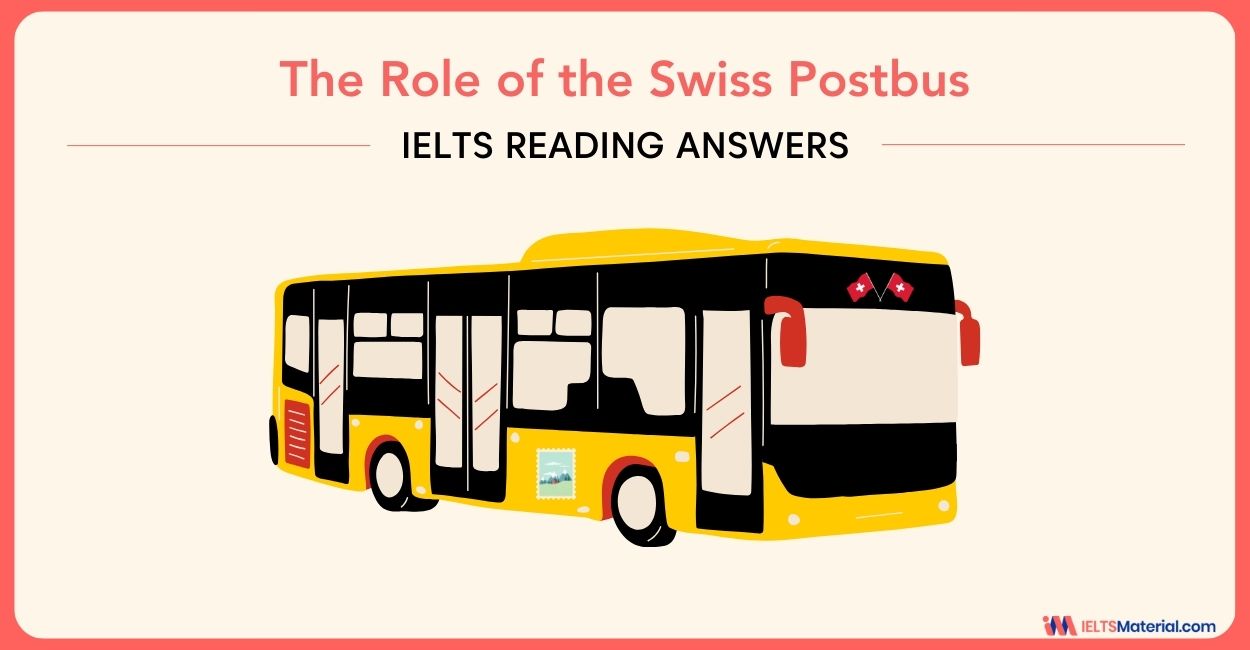Workplace Health and Safety & How to Manage Flexible Working – IELTS Reading Answers
11 min read
Updated On
-
Copy link
Boost your reading band score and comprehension with this blog focused on IELTS General topics, like ‘Workplace Health and Safety’ and ‘How to Manage Flexible Working’. Get detailed answer explanations and tips to sharpen your skills effectively.
Table of Contents
- Question Types for the Reading Passages - Workplace Health and Safety & How to Manage Flexible Working
- Passages for Workplace Health and Safety & How to Manage Flexible Working
- Reading Passage 1
- Reading Passage 2
- Answers For Workplace Health and Safety & How to Manage Flexible Working IELTS Reading Answers with Location and Explanations
- Tips for Answering the Question Types in Workplace Health and Safety & How to Manage Flexible Working Reading Answers

Limited-Time Offer : Access a FREE 10-Day IELTS Study Plan!
The IELTS General Reading test is designed to reflect real-life reading situations you might face in an English-speaking country, such as reading a job posting, understanding a travel brochure, or following a workplace memo. That is why regular practice with realistic reading materials, like ‘Workplace Health and Safety’ & ‘How to Manage Flexible Working’, is key to improving your comprehension and confidence.
In this blog, you will solve the ‘Workplace Health and Safety’ & ‘How to Manage Flexible Working’ passages, provide explanations and locations for the answers, and get tips to help you handle the two types of IELTS reading question types with examples. Also, have a look at the video below to learn about the worst IELTS Reading grammar mistakes you are making and losing precious score!
Question Types for the Reading Passages - Workplace Health and Safety & How to Manage Flexible Working
The IELTS General Reading passages, ‘Workplace Health and Safety’ & ‘How to Manage Flexible Working’ Reading Answers, from Cambridge IELTS 15 Reading Test 2, come with 13 questions. They showcase two common types of reading questions, namely
- IELTS Reading Table Completion (Q. 1-6)
- IELTS Reading Note Completion (Q. 7-13)
Passages for Workplace Health and Safety & How to Manage Flexible Working
Given below are the ‘Workplace Health and Safety’ & ‘How to Manage Flexible Working’ IELTS Reading passages. You can read them to learn how to answer the questions correctly and achieve a high IELTS band score.
Reading Passage 1
Workplace Health and Safety Considerations For Plumbers
A Like many trades, plumbing can be a dangerous job. It is important to take all reasonably practicable measures to keep customers and yourself incident and injury-free.
B Biohazard waste
Plumbers regularly come into contact with biohazard waste. It’s the nature of the job, but that doesn’t mean you should be complacent about it. According to Safe Work Australia, communicable diseases from work-related exposures to biological hazards such as sewage have been estimated to cause 320,000 deaths across the globe each year. In addition to this, plumbers are regularly exposed to other biohazards such as mold, bacteria, and algae. Don’t risk it – make sure appropriate clothing and equipment are used.
C Confined spaces
Plumbers may spend much of their time working in confined spaces, where they are at risk from contaminants, including airborne gases, vapors, and dust, that may cause injury from fire or explosion. They may also be exposed to high concentrations of airborne contaminants that may be harmful to health. For example, one plumber was fined $220,000 after an employee suffered from carbon monoxide poisoning. Another potential hazard for plumbers in confined spaces is that of drowning if water sources are not adequately cut off.
The Safe Work Australia confined spaces code of practice outlines the necessary steps and precautions for avoiding illness and injury.
D Electricity
The Master Plumbers’ Association calls electricity ‘plumbing’s hidden killer’. Metal pipes are often conductive so gloves that provide insulation should form part of a plumber’s tool kit, as should a plumbing voltage monitor and a volt tester. Gloves should be checked prior to every use and replaced every 12 to 14 months. Electrical equipment like bridging conductors should be regularly checked, with appropriate tags on the equipment to verify its safety. The project should be stopped immediately if there is any sign of electricity so that the power can be disconnected by a qualified electrician prior to continuing work.
Questions 1-6
Complete the table below.
Choose ONE WORD ONLY from the text for each answer.
Write your answers in boxes 1-6 on your answer sheet.
| Type of danger | Examples | Risks involved | Necessary action |
|---|---|---|---|
| Biohazard | 1 ……………………
mold, bacteria, algae |
can lead to disease and death | use protective clothing and equipment |
| Confined
spaces |
contaminants e.g. gases, vapors, and dust | injury from fire or explosion | follow Safe Work
code of practice |
| High concentrations of harmful airborne contaminants e.g.
carbon monoxide |
2 ……………………….. | follow Safe Work
code of practice |
|
| water | 3 ………………………… | cut off water sources | |
| Electricity | metal pipes which are conductive | death from electrocution | -use insulated
4 ………………………. and appropriate equipment – ensure equipment has 5 ……………………….. on to show it is safe – make sure electricity has been 6 ………………………. |
Learn quick solving tips and reading techniques from experts!
Connect with us through our FREE IELTS online classes!
Reading Passage 2
How to Manage Flexible Working With Your Employees
A There is no denying that flexible working has grown enormously in recent years. It does, however, require careful management.
B When it comes to implementing flexible working one word is key: trust. All flexible workers should be trusted and given well-defined objectives from the start and their contribution should be assessed according to their output, as opposed to the time they spend on the job. It can be a big step to implement such as change in your business, so if you are slightly cautious then I recommend perhaps setting up an end-of-the-day review to see how much progress has been made. As all parties find their feet with the new set-up, this contact can slowly be reduced.
C In my eyes, it is also vital that there is shared calendar access for everyone so that people can see where their colleagues are each day. This way if they need to catch up with someone they can plan when to do so. Technology now exists to enable employees to stay in touch with other members of staff and external partners. iMeet, for example, is a tool that allows all forms of collaboration for remote working, from video conferencing, live chat, and file sharing to screen sharing. The new breed of worker is therefore fully equipped to work productively away from the office, and can still feel like they’re in the same room as others when necessary.
D In my experience, employees are often more productive working at home as they can work the exact hours they want and do not have to cope with distractions caused by other employees. Being outside the confines of the office walls also appears to foster creativity. In addition, we find staff are more motivated as they have a better work-life balance. In terms of the business, we find this helps with top talent recruitment and staff retention, and a happy workforce is a more successful one.
Questions 7-13
Complete the notes below.
Choose ONE WORD ONLY from the text for each answer.
Write your answers in boxes 7-13 on your answer sheet.
Flexible working
How to organize flexible working
- trust your employees
- provide them with clear 7 ………………………..
- base measurements of performance on their output
- initially, have a 8 ……………………….. of progress each day
- make sure a 9 ……………………….. is accessible to give details of colleague locations.
- use a program such as iMeet to encourage different types of 10 ………………&.. between workers
Benefits of flexibility
- greater productivity
- less 11 ……………………….. from colleagues
- increase in 12 ………………………..
- more motivated staff
- greater success for the company with staff recruitment and 13 ………………………..
Want to practice with exclusive IELTS General Reading materials and experts?
Answers For Workplace Health and Safety & How to Manage Flexible Working IELTS Reading Answers with Location and Explanations
If you want to find out the reasons behind your answers, cross-check them with the explanations and locations to the two passages, ‘Workplace Health and Safety’ and ‘How to Manage Flexible Working’ provided below. It will help you to develop confidence while practicsing other IELTS Reading topics for General and Academic.
1 Answer: Sewage
Question Type: Table Completion
Answer Location: Paragraph B
Answer Explanation: The answer ‘sewage’ is found in paragraph B where it states that plumbers regularly come into contact with biohazard waste including sewage.
2 Answer: Poisoning
Question Type: Table Completion
Answer Location: Paragraph C
Answer Explanation: The answer ‘poisoning’ is found in paragraph C where it mentions a plumber was fined after an employee suffered from carbon monoxide poisoning.
3 Answer: Drowning
Question Type: Table Completion
Answer Location: Paragraph C
Answer Explanation: The answer ‘drowning’ is stated in paragraph C which mentions the hazard for plumbers in confined spaces of drowning if water sources are not adequately cut off.
4 Answer: Gloves
Question Type: Table Completion
Answer Location: Paragraph D
Answer Explanation: The answer ‘gloves’ is found in paragraph D which states that insulated gloves should be part of a plumber’s toolkit to provide protection from electricity.
5 Answer: Tags
Question Type: Table Completion
Answer Location: Paragraph D
Answer Explanation: The answer ‘tags’ is located in paragraph D which mentions that tags should be on electrical equipment to verify its safety.
6 Answer: Disconnected
Question Type: Table Completion
Answer Location: Paragraph D
Answer Explanation: The answer ‘disconnected’ is stated in paragraph D which says the project should be stopped immediately so electricity can be disconnected by a qualified electrician.
7 Answer: Objectives
Question Type: Note Completion
Answer Location: Paragraph B
Answer Explanation: The answer ‘objectives’ is found in paragraph B which states flexible workers should be given well-defined objectives.
8Answer: Review
Question Type: Note Completion
Answer Location: Paragraph B
Answer Explanation: The answer ‘review’ is located in paragraph B which recommends setting up an end-of-day review to monitor progress with flexible working.
9 Answer: Calendar
Question Type: Note Completion
Answer Location: Paragraph C
Answer Explanation: The answer ‘calendar’ is in paragraph C which states there should be shared calendar access so people can see colleague locations.
10 Answer: Collaboration
Question Type: Note Completion
Answer Location: Paragraph C
Answer Explanation: The answer ‘collaboration’ is found in paragraph C which mentions a tool called iMeet that allows all forms of collaboration for remote working.
11 Answer: Distraction
Question Type: Note Completion
Answer Location: Paragraph D
Answer Explanation: The answer ‘distraction’ is stated in paragraph D which says employees are more productive at home as they don’t have distractions from colleagues.
12 Answer: Creativity
Question Type: Note Completion
Answer Location: Paragraph D
Answer Explanation: The answer ‘creativity’ is located in paragraph D which states working outside the office appears to foster creativity.
13 Answer: Retention
Question Type: Note Completion
Answer Location: Paragraph D
Answer Explanation: The answer ‘retention’ is found in paragraph D which mentions greater staff recruitment and retention as a benefit of flexible working.
Tips for Answering the Question Types in Workplace Health and Safety & How to Manage Flexible Working Reading Answers
Getting familiar with each IELTS Reading question type is essential for achieving a high band score. Two common tasks, Table Completion and Note Completion, require you to extract and match information accurately from the passage. Here are some IELTS exam preparation tips for band score of 8+ that will also help you understand how to approach the problem.
Table Completion
Table completion questions in the IELTS Reading test ask you to fill in missing information in a table using words from the passage. Here are a few steps in which you can approach them:
- Read the instructions carefully: Pay attention to the word limit (e.g., NO MORE THAN TWO WORDS). Using too many words or incorrect formatting can cost you marks.
- Scan the table first: Skim the table quickly before reading the passage to get a sense of its structure. Look for keywords, headings, or column titles that can help guide your reading.
- Locate relevant information: Use the keywords to scan the passage and identify the part of the text that relates to the table entries.
- Watch out for synonyms: The table may use different words from those in the text. Look for paraphrased expressions or synonyms that convey the same meaning.
- Double-check your answers: Ensure the words you use fit grammatically and logically in the table. Always check spelling and word count and avoid leaving any gaps if possible.
Note Completion
Note completion questions require you to fill in missing words in a set of notes or summaries based on the passage. Here are five key tips for answering them accurately:
- Skim the notes: Before you begin reading the passage, quickly skim through the notes or sentences that need to be completed. Pay attention to keywords and the structure of the notes. This will give you an idea of what to look for in the text.
- Read the passage actively: As you read the passage, actively search for information that matches the content of the notes. Look for keywords, phrases, and concepts that align with what’s missing in the notes. Underline or highlight relevant parts of the text.
- Use the context: Pay close attention to the context of the passage and the surrounding information. This context can provide valuable clues to help you fill in the missing parts of the notes. Understand the flow of the text to ensure your answers make sense in the given context.
- Paraphrasing is key: The passage may not always use the same wording as the notes. Be on the lookout for synonyms, paraphrases, or similar expressions that convey the same meaning. The ability to recognize and interpret paraphrased information is crucial in this question type.
- Be concise and clear: When completing the notes, make your answers clear and concise. Avoid unnecessary details or lengthy sentences. Keep in mind that the notes are typically shorter and more focused than the original text. Ensure that your answers fit the format and structure of the notes provided.
To conclude, mastering IELTS Reading question types is essential for improving reading accuracy, speed, and overall band score. By learning to identify keywords, paraphrased expressions, and relevant details in the text, you will develop strong strategies to handle both factual and summary-based tasks. So, regular practice tests and targeted preparation will help you build confidence for your IELTS test day preparation.
Useful Links:
- Safety When Working On Roofs & Maternity Allowance For Working Women – IELTS Reading Answers
- Tree Cutters at Work & Plumbing Skills - IELTS Reading Answers
- Mechanical Lifting Equipment & Dealing with Customer Complaints – IELTS Reading Answers
- Growing Forced Rhubarb Reading Answers for IELTS General
- IELTS Reading Recent Actual Tests 2025
- Useful IELTS Reading Articles, Website Resources and Material for Academic and General Training

Start Preparing for IELTS: Get Your 10-Day Study Plan Today!
General Reading Practice Tests


Nehasri Ravishenbagam

Kasturika Samanta

Kasturika Samanta
Recent Articles

Kasturika Samanta

Kasturika Samanta


Kasturika Samanta




Post your Comments